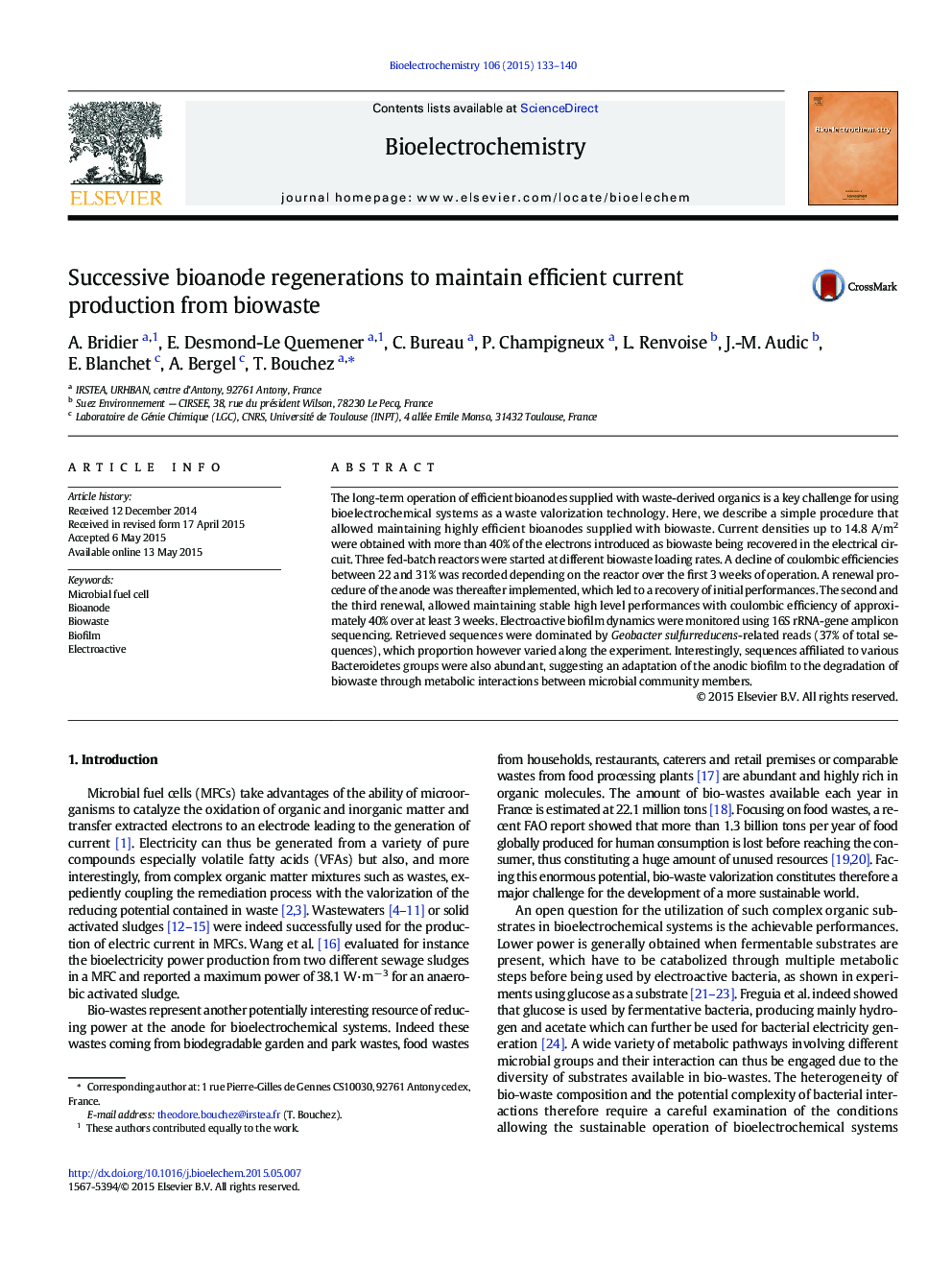| Article ID | Journal | Published Year | Pages | File Type |
|---|---|---|---|---|
| 1267870 | Bioelectrochemistry | 2015 | 8 Pages |
The long-term operation of efficient bioanodes supplied with waste-derived organics is a key challenge for using bioelectrochemical systems as a waste valorization technology. Here, we describe a simple procedure that allowed maintaining highly efficient bioanodes supplied with biowaste. Current densities up to 14.8 A/m2 were obtained with more than 40% of the electrons introduced as biowaste being recovered in the electrical circuit. Three fed-batch reactors were started at different biowaste loading rates. A decline of coulombic efficiencies between 22 and 31% was recorded depending on the reactor over the first 3 weeks of operation. A renewal procedure of the anode was thereafter implemented, which led to a recovery of initial performances. The second and the third renewal, allowed maintaining stable high level performances with coulombic efficiency of approximately 40% over at least 3 weeks. Electroactive biofilm dynamics were monitored using 16S rRNA-gene amplicon sequencing. Retrieved sequences were dominated by Geobacter sulfurreducens-related reads (37% of total sequences), which proportion however varied along the experiment. Interestingly, sequences affiliated to various Bacteroidetes groups were also abundant, suggesting an adaptation of the anodic biofilm to the degradation of biowaste through metabolic interactions between microbial community members.
